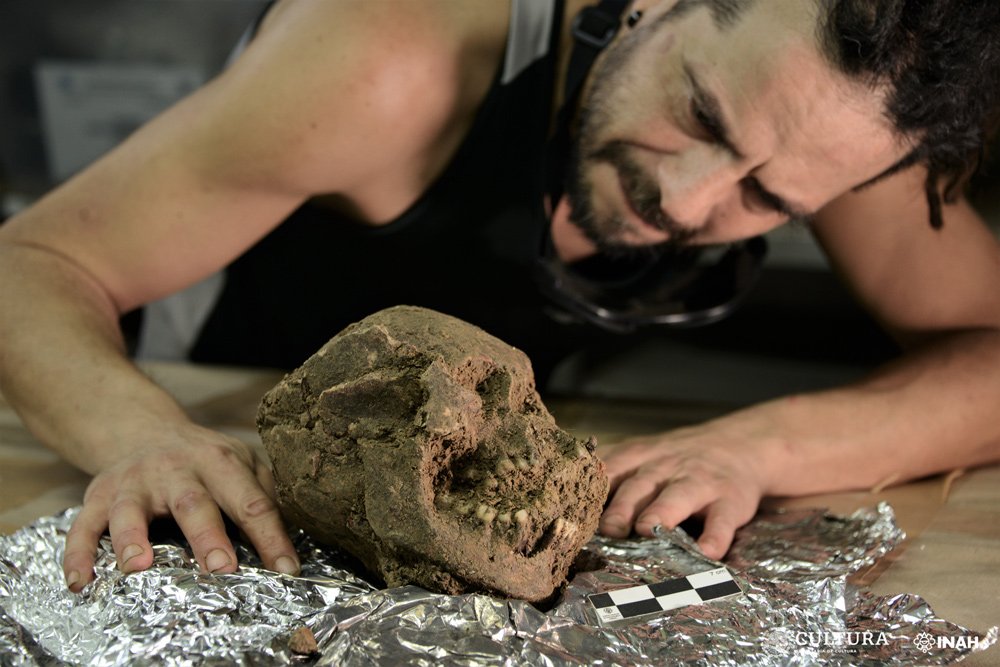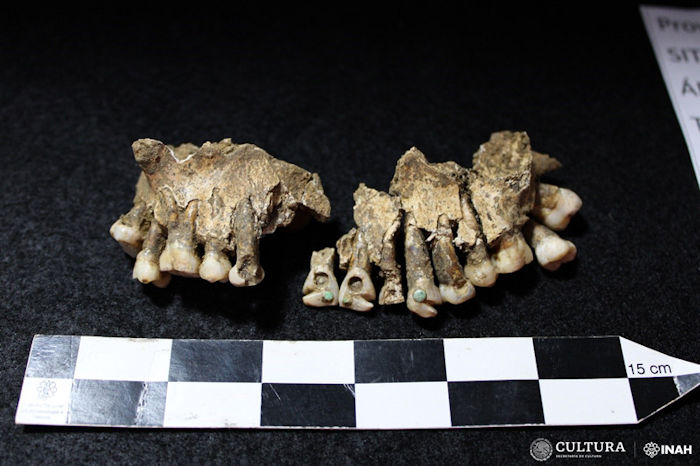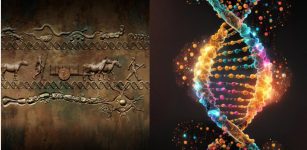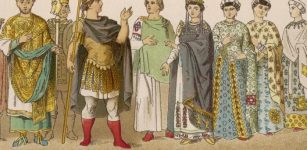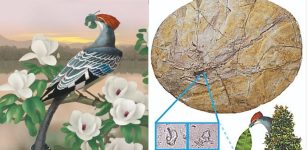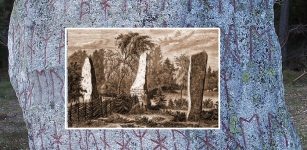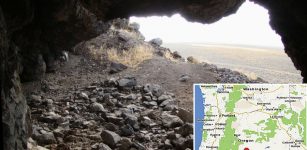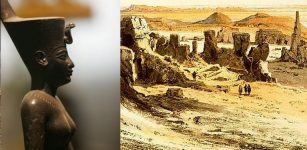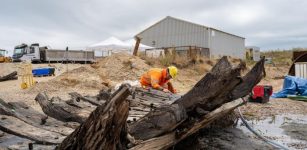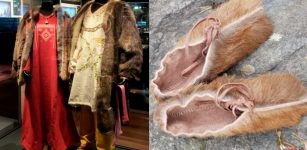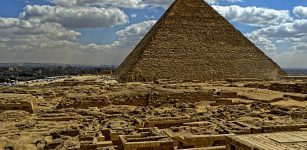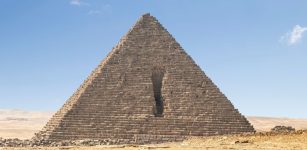Lady SAS – Ancient Skeleton Of Foreign Woman Found In Palenque – Who Was She?
Conny Waters - AncientPages.com - Pre-Hispanic skeleton recently unearthed in Palenque belongs to a foreign woman, reveals the detailed analysis conducted by experts from INAH (National Institute of Anthropology and History).
Skull of the "Lady SAS". Photo: Mauricio Marat. INAH
Thanks to the extensive studies. INAH specialists have been able to determine how the woman lived, her diet, and her facial features (or expression), especially when regarded as indicative of character or ethnic origin of the deceased.
The analysis also helped to learn about the woman’s diseases she suffered from.
The age of the ’Lady SAS’ was between 45 and 50 when she died, according to the observations made by the head of the Osteoarchaeology Section of the Palenque Archaeological Project (PAP), Luis Núñez Enríquez, osteoarchaeologist Luis Núñez Enríquez and physical anthropologists Miriam Camacho Martínez and Lucía López Mejía, attached to the Palenque Archaeological Project (PAP).
Luis Núñez Enríquez also points out that among the defining sexual traits is not only the pelvis, wider than a male one to facilitate the development of pregnancy, but also other manifest dimorphisms, for example, in the glabella , a region of the skull that is smoother in women than in men.
Skull of 'Lady SAS' - Image credit: Mauricio Marat. INAH
He said that "it is believed that ’Lady SAS’ died between the years 800 and 850 AD, from the association of his offering, consisting of two complete vessels and one fragmented with the Palencan ceramics of that historical period”.
In addition, the researchers have informed that the her skull shows an intentional deformation of an erect tabular type, which mainly expanded it in width and height.
This kind of deformation was at the time intentional and related to a cultural preference in what was previously called "Lakamha" (original Maya name for Palenque, as we know it today).
Núñez Enríquez explains that in Lakamha', the cultural preference was for oblique tabular cephalic modeling, “which elongated the skull backwards, while, as has been observed, the erect tabular was used by individuals foreign to the local pattern”.
One proposal from the experts is that "Lady SAS" could have been a foreigner within the old kingdom, despite the fact that she was buried in an area close to the urban nucleus of the site.
“The human burials of Palenque are usually located inside the temples or in the habitation areas, and the space where we found this skeleton – a lithic workshop , as reported by the INAH – is neither one nor the other. One possibility is that it is associated with this activity, and that those who worked in the workshop have decided to bury it right there."
Dental modifications and pathologies
During its discovery, one of the most striking features of the "Lady SAS" was a series of green stone inlays on four of its front teeth and on one canine.
Skull of the "Lady SAS".- Dental analysis - Photo: Mauricio Marat. INAH
Currently, the cleaning of her bones has revealed a tubular green stone bead that was also part of her trousseau but, due to the passage of time and the pressure of the earthen matrix, was hidden under her jaw.
Regarding the symbolism of these inlays and the filing that some of the woman's teeth also have, the specialist points out that it is unlikely that she had a relationship of economic-social status.
In Palenque, “popular contexts have been excavated in which there are skeletons that also have filings, inlays and dental modifications. In contrast, skeletal remains of the elite, such as that of Pakal himself, do not have them, that is, they were perhaps not representative of status.
Skeleton of Lady SAS. Photo: Mauricio Marat. INAH
"Ethnography shows us many societies that, to date, as in Africa or South America, practice dental filing and head deformation, reflecting codes between people who share a symbolic language: that they are of the same ethnic group or practice the same trade" , comments the osteoarchaeologist.
Further examinations have also focused on the pathologies that affected pre-Hispanic women, including dental caries and tartar, signs of a diet based on carbohydrates (corn) and animal protein.
Detail of the upper jaw, showing the inlays and filing. Photo: Palenque Archaeological Project - Promise 2022.
The INAH team also report the existence of hypoplasia (minor amount) of enamel in the lower canines and premolars of "Señora SAS". Likewise, she identified traces of scurvy in the skull, perhaps due to a lack of vitamin C during his first years of life.
A final feature to highlight, concludes the osteological analysis, is that the two diseases already described, in addition to other injuries such as a fracture in the distal epiphysis, were healed at the time the woman died, for which reason it is believed that she died of natural causes, between 45 and 50 years of age, according to the limit of life expectancy in pre-Hispanic times.
Written by Conny Waters - AncientPages.com Staff Writer

